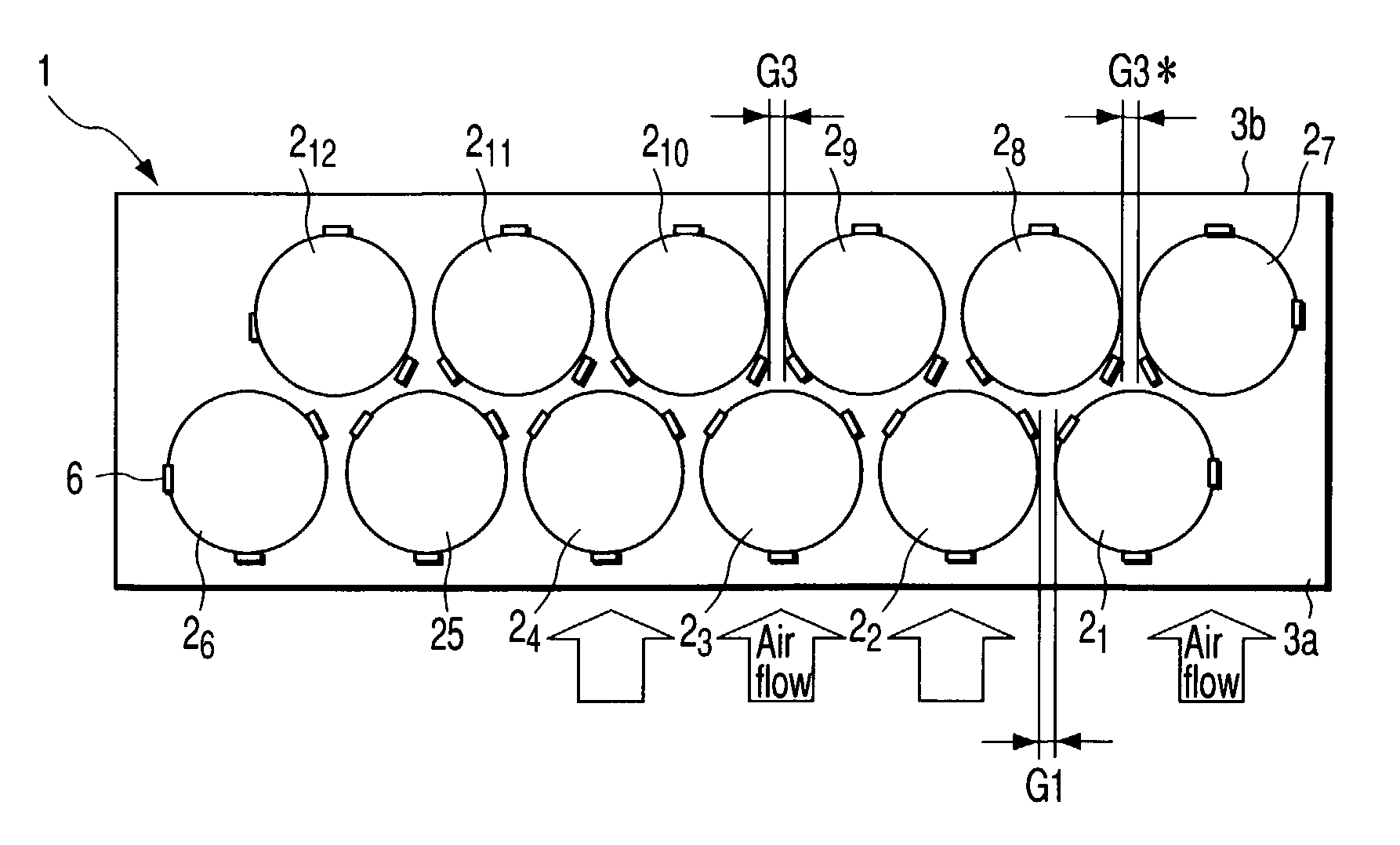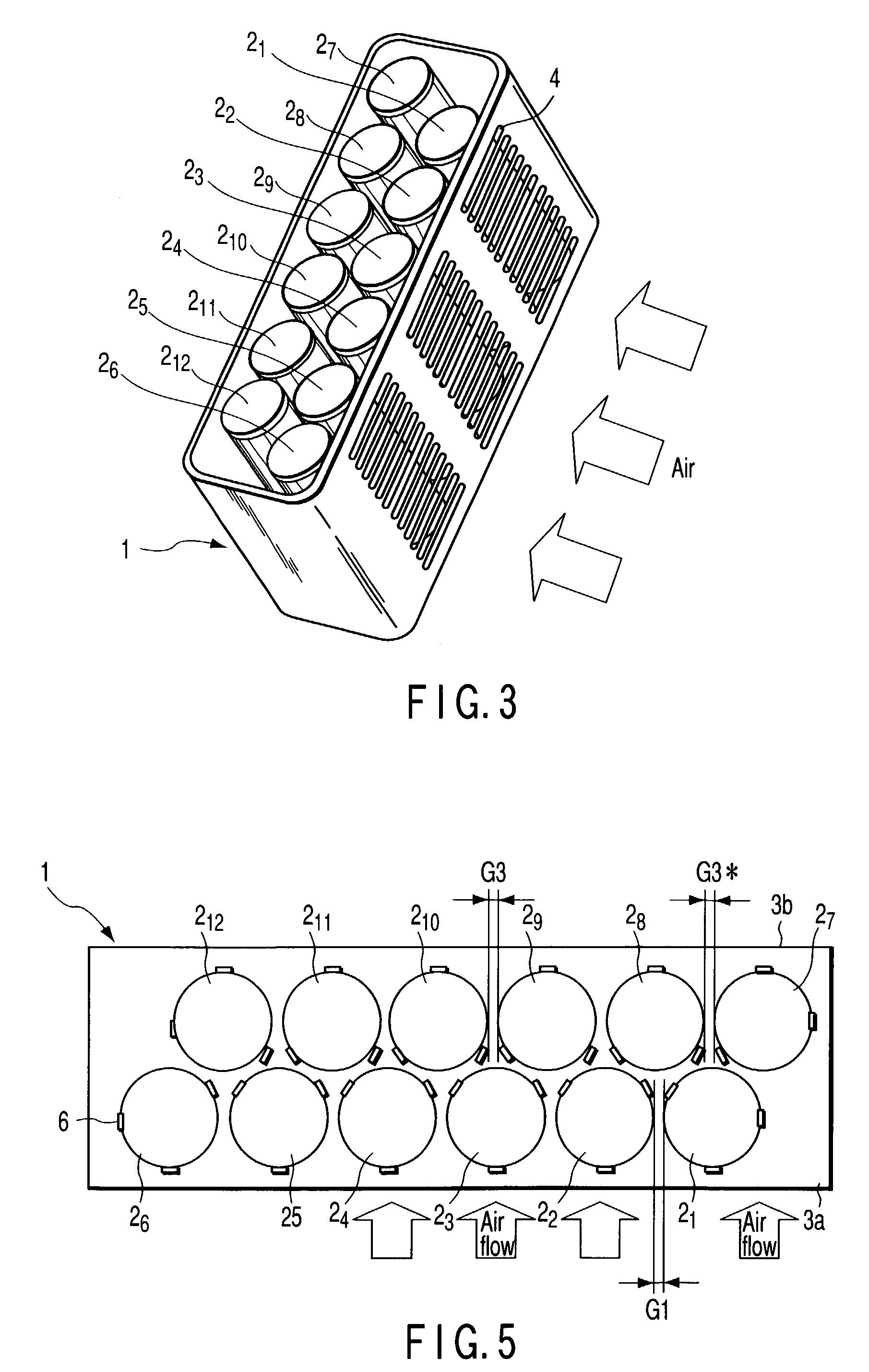Battery pack and rechargeable vacuum cleaner
a battery pack and vacuum cleaner technology, applied in the field of battery pack and rechargeable vacuum cleaner, can solve the problems of lithium ion secondary batteries, li metal dendrites are likely to grow in a short time, safety problems, etc., and achieve the effect of improving the cycle characteristi
- Summary
- Abstract
- Description
- Claims
- Application Information
AI Technical Summary
Benefits of technology
Problems solved by technology
Method used
Image
Examples
example 1
[0154]Twelve cylindrical lithium ion secondary batteries 21 to 212 of 18650 size, 18 mm in diameter, 65 mm in length, and 1.5 Ah in capacity were prepared. Two lithium ion secondary batteries were connected in parallel by resistance welding with Ni tabs to form one unit, and six units were connected in series by leads to form a battery set. The battery array was vertical two rows×lateral six rows. When connecting by tabs, twelve unit cells were mutually spaced. The size of the obtained battery set was 135 mm in width (width in the longitudinal direction), 33 mm in depth (width in the lateral direction), and 65 mm in height.
[0155]By forming an outer case 1 by injection molding of epoxy resin around this battery set, the battery set was put in the outer case 1, and a battery pack in the dimensions of 140 mm×70 mm×38 mm having the structure as shown in FIG. 1 and FIG. 2 was fabricated.
[0156]Of the two side walls at the longitudinal direction side of the outer case 1, the first wall 3a ...
examples 2 to 8
[0161]Battery packs were assembled in the same configuration as in Example 1, except that the gap G1 between the unit cells of the vertical first row, or the gap G2 between the unit cells of the vertical first row and the unit cells in the vertical second row was changed as shown in Table 1.
example 9
[0162]A battery pack was assembled in the same configuration as in Example 1, except that a heat equalizing plate was interposed between the unit cells 21 to 26 in the vertical first row and the unit cells 27 to 212 in the vertical second row.
[0163]As the heat equalizing plate, as shown in FIG. 6 and FIG. 7, a corrugated plate shaped along the outer circumference of unit cell was used. The heat equalizing plate was formed of aluminum, measuring 60 mm in height, 119 mm in width, and 1.0 mm in thickness. In the heat equalizing plate, two rectangular lateral slits of 10 mm in height and 25 mm in width were arranged vertically, and three rows were arranged laterally to form ventilation ports.
PUM
| Property | Measurement | Unit |
|---|---|---|
| distance | aaaaa | aaaaa |
| height | aaaaa | aaaaa |
| height | aaaaa | aaaaa |
Abstract
Description
Claims
Application Information
 Login to View More
Login to View More - R&D
- Intellectual Property
- Life Sciences
- Materials
- Tech Scout
- Unparalleled Data Quality
- Higher Quality Content
- 60% Fewer Hallucinations
Browse by: Latest US Patents, China's latest patents, Technical Efficacy Thesaurus, Application Domain, Technology Topic, Popular Technical Reports.
© 2025 PatSnap. All rights reserved.Legal|Privacy policy|Modern Slavery Act Transparency Statement|Sitemap|About US| Contact US: help@patsnap.com



